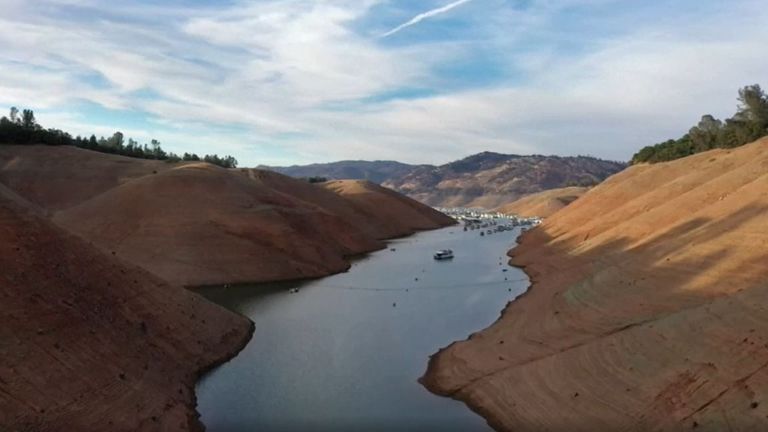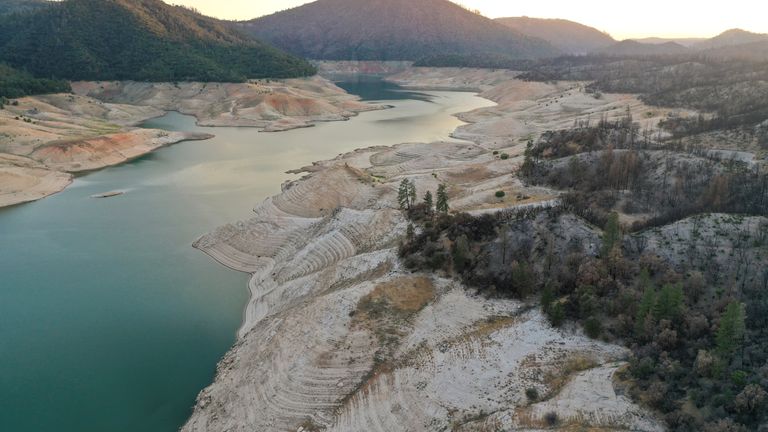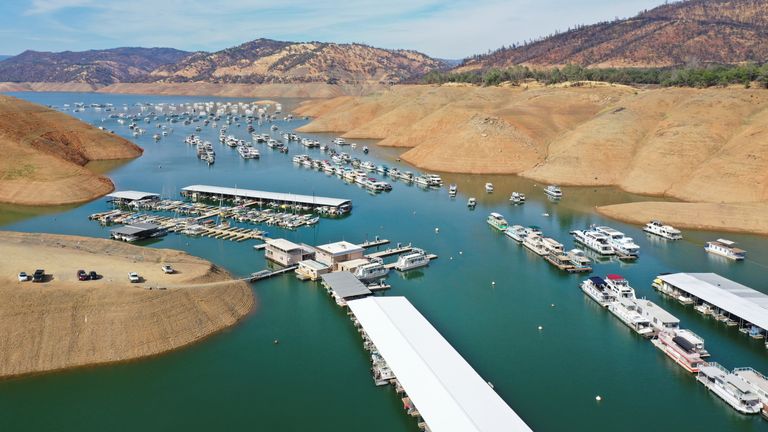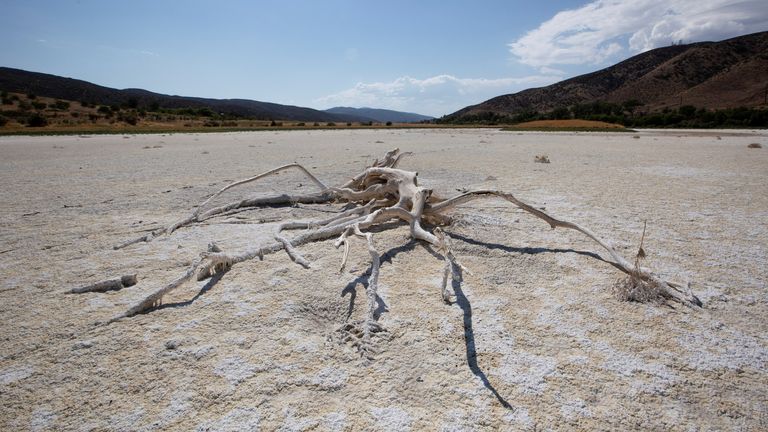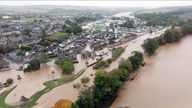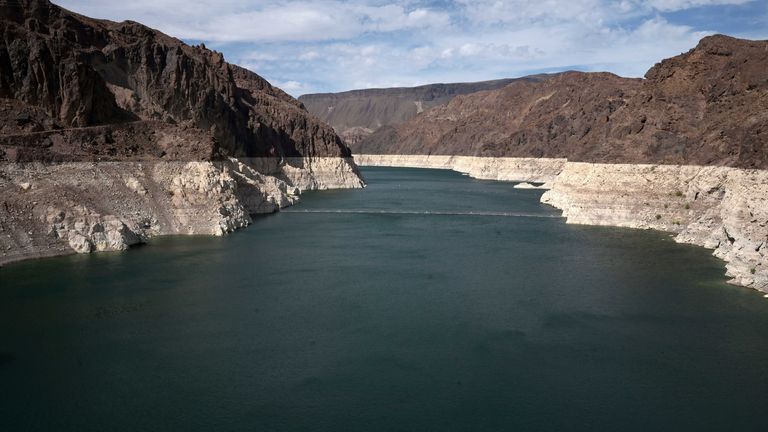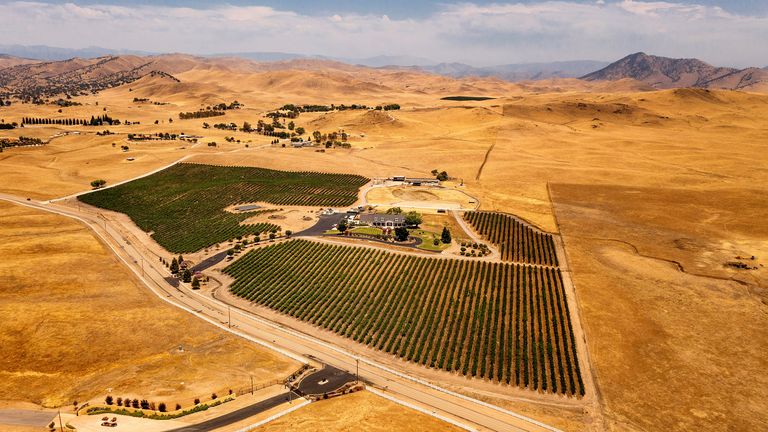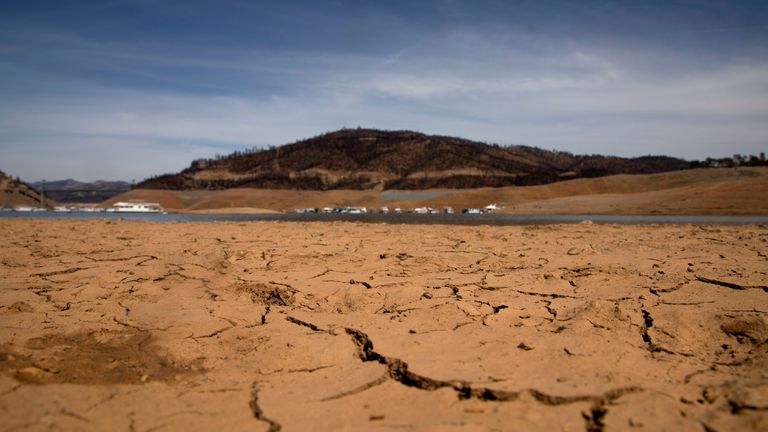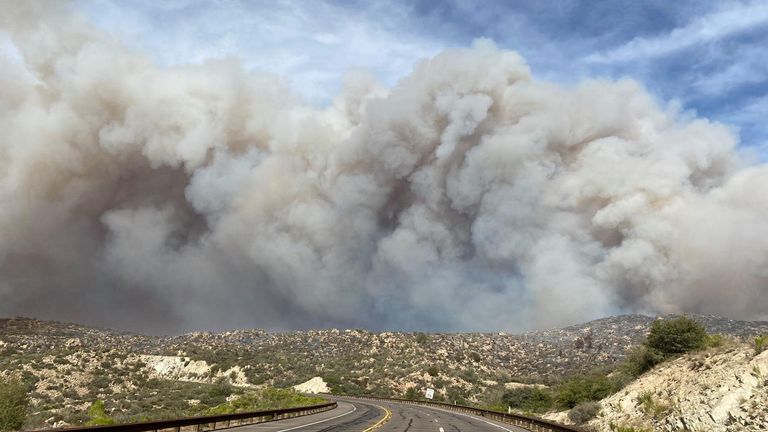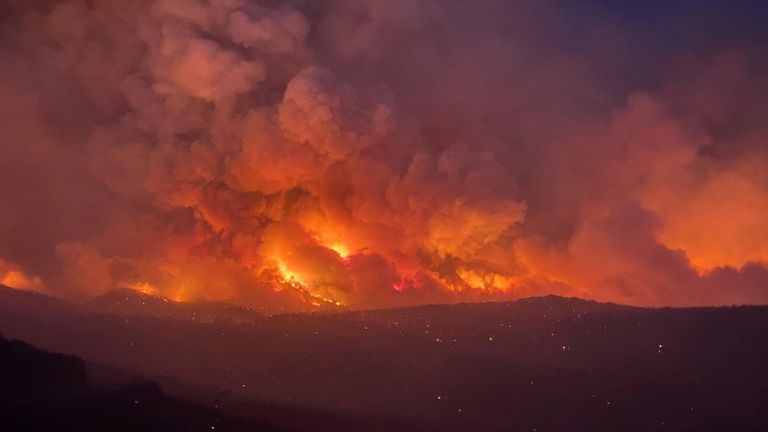In pictures: How blistering heatwave is fuelling extreme 'mega drought' in western US
Climate change is being blamed as a major cause of the extreme weather that also threatens power supplies as demand soars.
Saturday 19 June 2021 16:31, UK
A searing heatwave is fuelling an extreme "mega drought" in the western US and prompted warnings about water shortages and wildfires.
Blistering temperatures, which have topped 50C (122F) in the desert resort city of Palm Springs, California, have also put the country's fragile power grid under intense pressure as people crank up air conditioning in a bid to counter the scorching heat.
The energy problems have been further exacerbated by rapidly falling water levels at reservoirs, threatening the shutdown of hydroelectric power plants.
This has led California to ration energy to cope with the spike in demand.
At Lake Oroville, the state's second largest reservoir, the water level is hovering near 35% capacity, according to the authorities.
Listen and follow ClimateCast on Spotify, Apple Podcasts, or Spreaker
The Hoover Dam's Lake Mead near Las Vegas, Nevada, which generates electricity and supplies water to about 25 million people, is at its lowest level since the 1930s.
A tidemark on the lake's shoreline marks how much the level has dropped over time.
The severe drought has also caused problems across major parts of the US farm belt, threatening recently planted crops in Iowa, Minnesota and the Dakotas.
Climate change has been blamed as a major cause of the extreme weather, which has sparked massive wildfires.
Wildfire historian Stephen Pyne, who is a professor at Arizona State University, said large-scale blazes had become a serious problem in the past two years due to the continuous drought in the western part of the country.
He said: "We are in the midst of a long drought and over the last couple of years a very deep drought.
"Many people are now referring to this as a 'millennial drought' or a 'mega drought'.
"So everything out there is abnormally dry and essentially everything is available to burn."
He pointed out that if the drought continues in Arizona and California, the scale of mountain fires this summer may be much larger than last year.
Wildfires scorched more than 6,500 square miles (17,000 square km) of land in 2020, destroying hundreds of Californian homes during a particularly fierce fire season.
In the past week, Arizona, Nevada and other areas have experienced the highest level of hot weather in history, and about 43 million people are under a high temperature warning.
Prof Pyne said: "What we're seeing with climate change is that it is acting on and exaggerating all kinds of climatic conditions.
"So it's just making things worse. We're seeing more frequent fires, more severe fires.
"We're seeing them on a scale, not just in terms of area of largeness, but intensity plus area combining."
Sky News has launched the first daily prime time news show dedicated to climate change.
The Daily Climate Show is broadcast at 6.30pm and 9.30pm Monday to Friday on Sky News, the Sky News website and app, on YouTube and Twitter.
Hosted by Anna Jones, it follows Sky News correspondents as they investigate how global warming is changing our landscape and how we all live our lives.
The show also highlights solutions to the crisis and how small changes can make a big difference.
